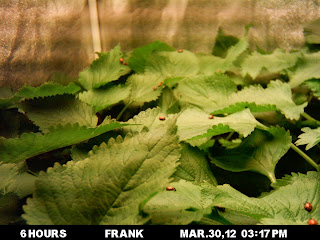I can imagine very few things more critical to the sovereign nature of a nation than Farming and the Military. Over Memorial Day we remember those who gave their lives serving their country. This Memorial Day I spent time thinking about how, even for those that are home, they are still under assault.
We have reached the first generations of Chemical death and the early stages of reproductive follow-though to the next generation that were spoken of in the book
Our Stolen Future. Farmers, Soldiers and others suffer from their exposure to toxic chemicals. It seems that we and they have known this the whole time. This exposure was part of the risks that they take to provide for our country. This exposure is necessary?
We can limit the damage in discreet instances and exposures, but when a chemical is persistent in nature should we ever release it?
Can any persistent chemicals be used on Organic Food Crops?
I didn't get in this Memorial Day Mindset on my own. I was gently guided there by the photo below:
We live along the Alameda Creek and the Water District was/is spraying the roads on either side over the next week. Along the creek there are several of these signs with different dates letting people know that the road will be closed. There was no info telling us how long to stay off the road, so I looked up the MSDS on the treatments used. Here they are:
Milestone by Dow Agro Sciences.
Aquamaster by Monsanto Company
In-Place and
Competitor by Wilbur-Ellis
In-Place and Competitor are rather innocuous oil based agents that help the Milestone and Aquamaster stay where they're sprayed. I found no real need to look into those two.
Not knowing much about Milestone or Aquamaster I dug a bit:
So my pasture raised beef might be killing my garden? Awesome!
Same Story more Science.
Wait, what, Aquamaster is just Round-Up that is safe to use near water? I guess I am OK with that even though
Monsanto is paying Farmers to lay off the Round-Up already.
So it was through that process that I got stuck on the persistent notion that persistent chemicals persist persistently and pervasively and in most cases are not even "called" persistent.















